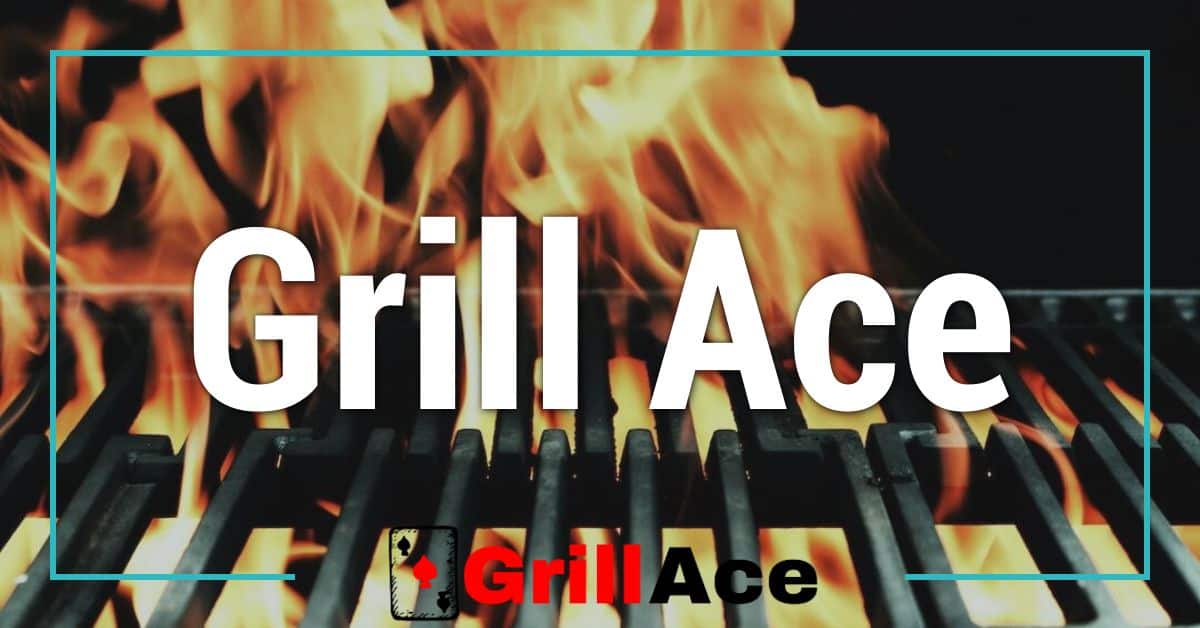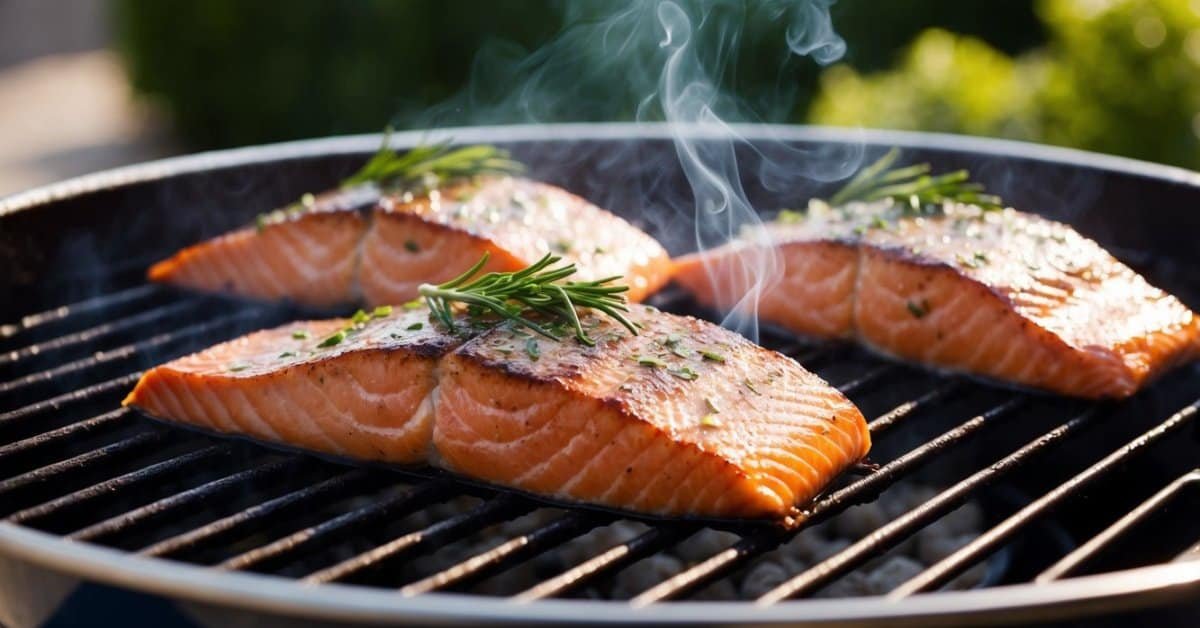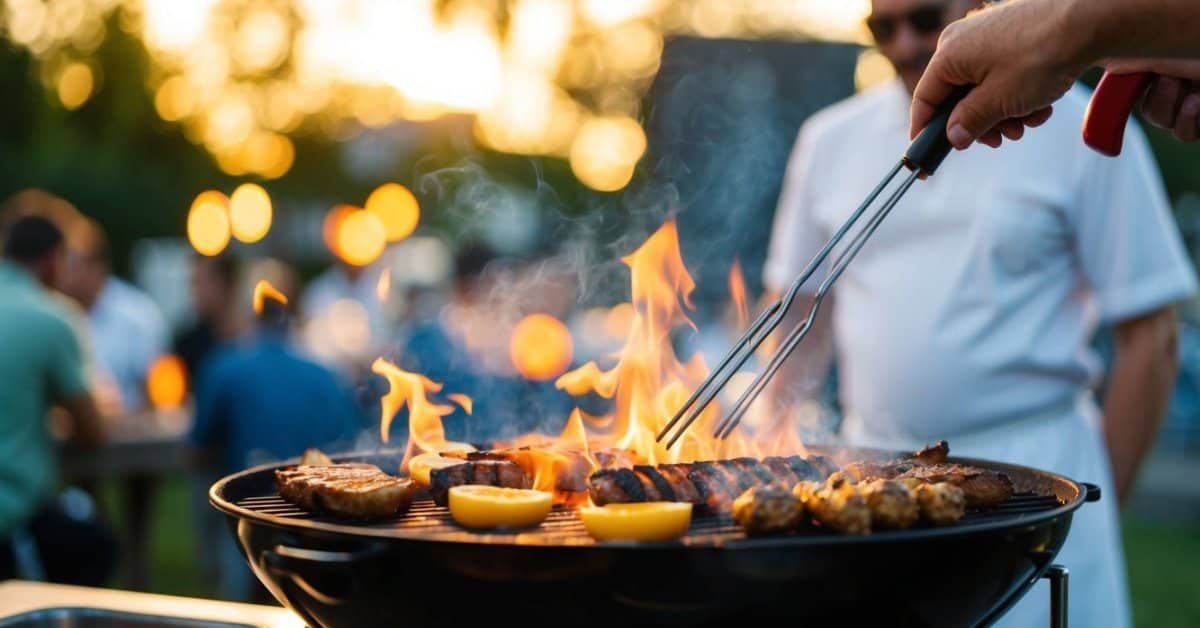Key Takeaways
- Understand the different steak cuts, such as ribeye, New York strip, filet mignon, T-bone, and sirloin, to choose the best option for grilling.
- Look for high-quality steak based on USDA grading, focusing on marbling, color, and texture for optimal flavor and tenderness.
- Utilize marinades and seasonings, trimming excess fat, and pounding tougher cuts to enhance the steak’s flavor before grilling.
- Preheat the grill to 450°F-500°F for the perfect sear, and use a meat thermometer to achieve the desired doneness.
- Let the steak rest for 5-10 minutes after grilling to allow juices to redistribute, ensuring a juicy and flavorful final product.
There’s nothing quite like the sizzle of a perfectly grilled steak. Whether you’re a seasoned grill master or just starting out, achieving that ideal balance of tenderness and flavor can feel daunting. I’ve spent years perfecting my grilling techniques and I’m excited to share the secrets that elevate your steak game.
Understanding Steak Cuts
Grilling a perfect steak starts with understanding the different cuts available. Each cut offers unique flavors and textures that elevate any backyard barbecue. Knowing these cuts helps in selecting the ideal steak for grilling.
Popular Cuts for Grilling
- Ribeye: Known for its rich marbling, the ribeye delivers tender, juicy bites full of flavor. This cut’s fat content enhances its flavor when grilled.
- New York Strip: The New York strip provides a balance between tenderness and chew. This cut often has a bold beef flavor, making it a favorite among steak lovers.
- Filet Mignon: The filet mignon boasts the highest tenderness among cuts. This lean cut offers a buttery texture and captures the essence of grilled steak when cooked properly.
- T-Bone: Combining two cuts in one, the T-bone features both strip and filet sections. Grilling this cut brings out flavors from both sides, creating a deliciously versatile option.
- Sirloin: The sirloin cut is a budget-friendly choice that doesn’t sacrifice flavor. It’s lean and offers a great beefy taste, perfect for those who enjoy a hearty steak without overspending.
Choosing the Right Quality
- Grade: Focus on USDA grades like Prime, Choice, and Select. Prime offers superior marbling and tenderness, while Choice provides excellent quality at a more affordable price. Select, while leaner, might lack the flavor depth of the higher grades.
- Marbling: Look for steaks with visible fat specks (marbling) distributed throughout the muscle. More marbling usually indicates better flavor and juiciness when grilled.
- Color and Texture: Choose cuts that appear deep red with firm textures. Dull color or a grainy texture often points to lesser quality meat.
- Aging: Dry-aged steaks have enhanced flavor and tenderness due to moisture loss during the aging process. Opt for aged cuts for a gourmet grilling experience.
- Source: Whenever possible, buy from reputable butchers or trusted sources. Knowing the origins of your steak can assure quality and ethical practices.
Preparation Techniques
Preparation sets the stage for grilling a perfect steak. Attention to detail enhances flavor and tenderness, making each bite unforgettable.
Marinades and Seasonings
Marinades add depth to steak flavor. I typically use a mix of olive oil, vinegar, and fresh herbs like rosemary or thyme. For an easy marinade, combine ¼ cup olive oil, 2 tablespoons balsamic vinegar, and minced garlic from one clove. Allow the steak to marinate for at least 30 minutes, but one to four hours yields a better flavor absorption. Seasoning with salt and pepper is non-negotiable. I recommend using kosher salt and freshly cracked black pepper for an even finish. The right seasoning elevates the meat’s natural flavors without overpowering them.
Trimming and Pounding
Trimming excess fat enhances the grill experience. I often remove thick edges and silver skin for a cleaner bite and better cooking. For tenderizing tougher cuts, consider pounding the steak. Place the steak between plastic wrap and gently pound it with a meat mallet, creating a uniform thickness. This approach not only breaks down muscle fibers but also cooks the steak more evenly. Aim for about ½ inch in thickness for optimal grilling.
The Grilling Process
Grilling a steak requires precision and attention to detail. Understanding the key steps can transform your backyard grilling into a culinary triumph.
Preheating the Grill
Preheating the grill is integral for achieving a perfect steak. Start by igniting the grill and closing the lid. Allow it to reach a high temperature of 450°F to 500°F. This temperature creates a sear that locks in juices and enhances flavor. For charcoal grills, use a combination of direct heat and an area of indirect heat by pushing coals to one side, creating a hot zone for searing and a cooler zone for finishing. Gas grills require a few minutes of full burner activation, ensuring even heat distribution. Once preheated, clean the grates with a brush to prevent sticking and ensure those beautiful grill marks.
Cooking Temperatures for Steak
Cooking temperature plays a vital role in steak doneness. I recommend using a meat thermometer for accuracy.
| Doneness | Internal Temperature (°F) |
|---|---|
| Rare | 120 – 125 |
| Medium Rare | 130 – 135 |
| Medium | 140 – 145 |
| Medium Well | 150 – 155 |
| Well Done | 160 and above |
Aim for medium-rare (130°F) for a juicy, tender steak. After searing both sides on high heat for about 4-5 minutes, move the steak to the cooler side of the grill to finish cooking slowly, ensuring even doneness. Always let the steak rest for 5-10 minutes post-grilling; this allows the juices to redistribute, enhancing flavor and tenderness.
Grilling Tips and Tricks
Grilling a steak isn’t just about cooking; it’s an art. With the right tips and tricks, anyone can elevate their grilling game and impress family and friends.
Achieving the Perfect Grill Marks
Achieving perfect grill marks not only looks fantastic but also enhances the steak’s flavor. Start by preheating the grill to a high temperature, ideally between 450°F and 500°F. Place the steak on the grill at a 45-degree angle to the grates, allowing for those signature diamond-shaped marks. Avoid moving the steak for the first few minutes; give it a chance to sear properly. Flip the steak halfway through its cooking time, maintaining that angle to create crosshatch marks. For extra flavor, consider brushing the steak lightly with olive oil before grilling.
Resting Your Steak
Resting your steak is crucial for achieving tenderness and flavor. After removing it from the grill, place the steak on a cutting board and cover it loosely with aluminum foil. This allows the juices to redistribute back into the meat, enhancing moisture and taste. Rest the steak for 5 to 10 minutes; this simple step ensures each bite stays juicy and delicious. If you cut into the steak too soon, juices spill out, resulting in a dry bite. Timing this part of the grilling process is key to a great finished product.
Conclusion
Grilling the perfect steak is an art that combines knowledge technique and a bit of passion. With the right cuts quality ingredients and attention to detail you can elevate your grilling game to new heights. Remember that each step from marinating to resting plays a crucial role in achieving that juicy flavorful result.
So fire up your grill and put these tips into practice. Enjoy the process and savor the delicious rewards that come from mastering the grill. Your next backyard barbecue is sure to impress friends and family alike. Happy grilling!















